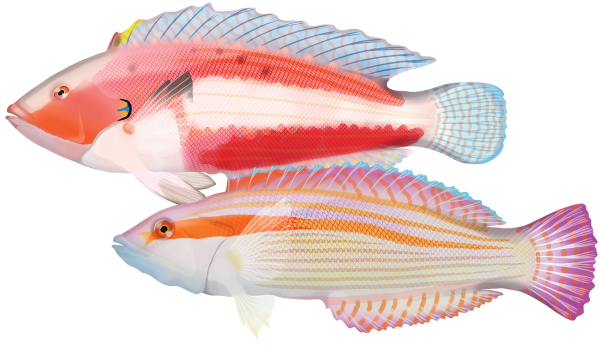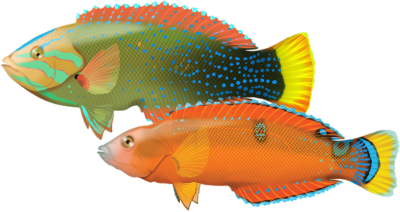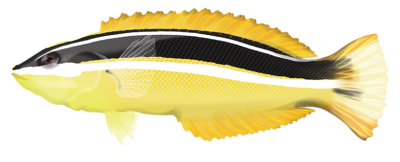Quick Facts
Distribution

Interesting Info
- The Western King Wrasse is a fish species found in the coastal waters of Western Australia, ranging from Shark Bay in the north to Albany in the south.
- They have a distinctive reddish-pink body with white markings along the sides. The head of the Western King Wrasse is typically a different colour from the body, ranging from blue-green to brownish-red.
- The Western King Wrasse is an omnivore, meaning it eats a variety of prey, including small fish, crustaceans, molluscs, and algae.
- They are a diurnal fish, meaning it is active during the day and rests at night.
- Western King Wrasse are sequential hermaphrodites, starting as females and later transforming into males as they grow larger. This process is triggered by social cues, and it allows the species to reproduce successfully.
- Breeding typically occurs during the warmer months between October and April, with males building nests and attracting females to spawn. Females lay their eggs in the male’s nest, and the male then fertilises the eggs and guards them until they hatch.
- Estimated lifespan is up to 30 years.
Species Interaction
Recreational Fishing, Snorkeling & Diving
Western king wrasse is a popular target for recreational anglers in Western Australia due to its size and fighting ability. They are also known for their striking colours and are a popular species to observe in the wild for snorkelers and divers.
Scientific Classification
Kingdom: Animalia
Phylum: Chordata
Class: Actinopterygii
Order: Perciformes
Family: Labridae
Genus: Coris
Species: Coris Auricularis
Conservation Status
In Western Australia, the Department of Primary Industries and Regional Development (DPIRD) assesses the conservation status of species using a system called the “Western Australian Wildlife Conservation Status.” Under this system, the Western King Wrasse is considered to be of “Least Concern”.
Fish Taste Quality
Western king wrasse are considered to be good eating fish. They have firm, white flesh that is said to be mild and slightly sweet in flavour.
Taste Rating: 3/5
How to catch
Western King Wrasse
Catch Difficulty: Easy
Tackle: Running Sinker Rig
Bait: Crab, Fresh cut flesh baits, Pilchards, Prawns, Squid, Worms
Technique: Keep bait on the bottom, Keep bait close to the reef/structure
Popularity: Targeted
Recreational Viewing
- Snorkeling & Scuba
Finding: Easy
Temperament: Curious
Location: Inner Reef, Outer Reef, Lagoon
Danger: None





